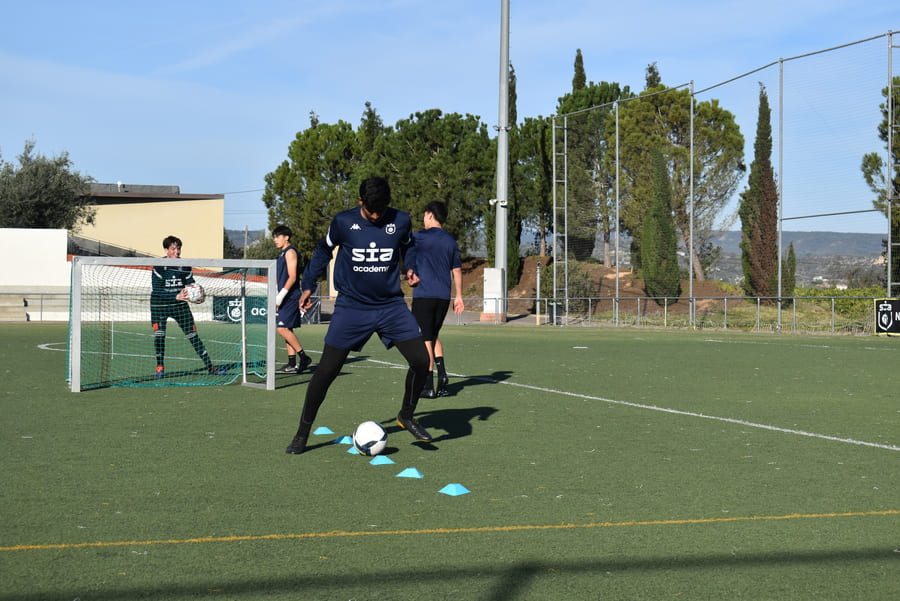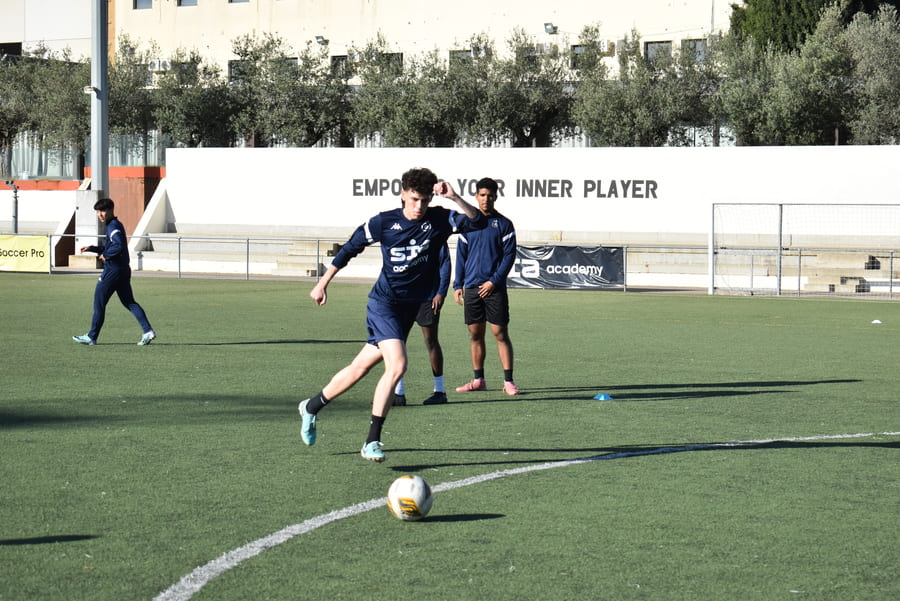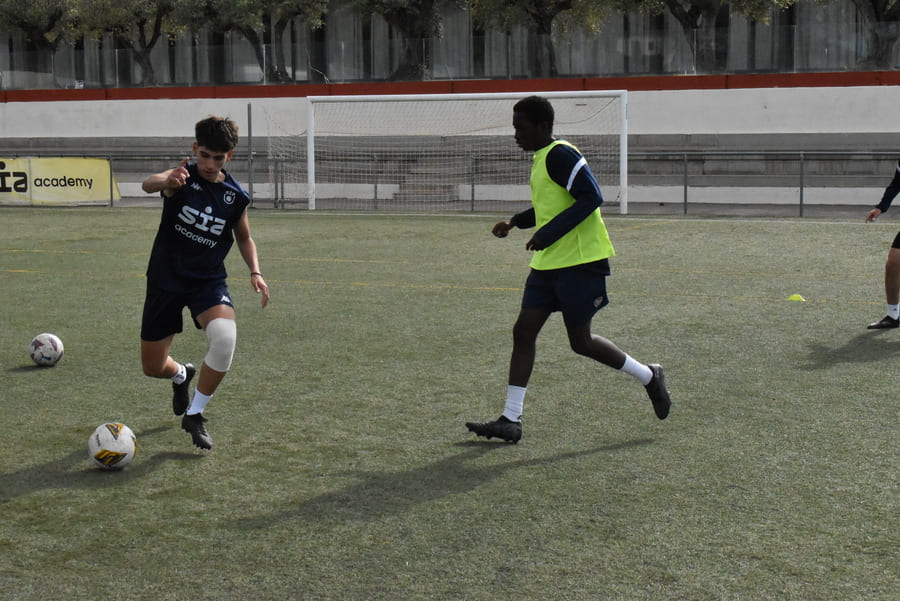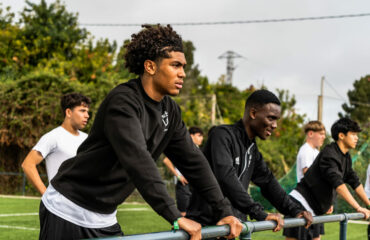Modern football demands much more than talent with the ball. Speed, strength, endurance, and tactical intelligence are essential qualities that can only be achieved through a structured training plan. Designing an effective training routine for a footballer means understanding that every detail matters: from weekly planning to recovery and nutrition. In this article, I’ll show you how to create a complete routine and explain how we do it at SIA Academy, where we train high-performance players ready to compete at the top level.
Table of contents
The importance of personalized routine
Every footballer is different. Training a fast striker isn’t the same as preparing a playmaking midfielder. An effective sports routine must adapt to the player’s position, age, physical level, and competitive schedule. In our daily work, we design individualized plans that enhance strengths and correct weaknesses.
As José Luis, one of our coaches, says:
“Training must be specific and progressive. Repeating exercises without purpose is useless; every session must bring you closer to your best version.”
This approach prevents stagnation and reduces the risk of injury, two common enemies of young footballers. Good planning is synonymous with consistency and progress.

The ideal structure for a weekly routine
An effective training week is usually divided into several blocks. Although it varies depending on the stage of the season, the general structure includes:
- Monday: active recovery and technical work. After the weekend match, we prioritize low-intensity exercises, joint mobility, and ball control.
- Tuesday: strength and power. We focus on the lower body and core through gym sessions and plyometrics.
- Wednesday: endurance and tactics. We combine possession drills and small-sided games to improve decision-making under fatigue.
- Thursday: speed and reaction. Short sprints, changes of pace, and ball acceleration drills.
- Friday: match preparation. Tactical work, match simulation, and muscle activation.
- Saturday or Sunday: competition.
The balance between workload and recovery is essential. Training more doesn’t mean training better; the body needs time to assimilate the effort in order to improve.
The role of strength and injury prevention
Young footballers often underestimate strength training. However, a solid base is key to enduring the intensity of training and matches. In our program, we include functional exercises using body weight, resistance bands, and free weights, always prioritizing proper technique.
José Luis explains it clearly:
“A strong player is a faster, more stable player and less likely to get injured. Strength isn’t just about lifting weight; it’s about controlling your body in every movement.”
Our weekly routine includes specific prevention sessions focusing on the core, glutes, and stabilizers of the ankle and knee. These areas are critical for maintaining stability during turns, jumps, and changes of direction.
Nutrition and rest: the invisible allies
Training doesn’t end when you leave the pitch. Nutrition and rest are fundamental pillars for improving performance. In our daily work, we emphasize maintaining a balanced diet rich in proteins, complex carbohydrates, and healthy fats.
After each session, we recommend proper hydration and a meal that promotes muscle recovery. Moreover, sleep is the best natural supplement: at least eight hours of nightly rest optimize hormone function and help regenerate muscle tissue.

Mentality as a differentiating factor
A footballer doesn’t just train the body but also the mind. At the high-performance level, concentration, discipline, and pressure management are decisive. Mental consistency is what allows you to follow a routine even on difficult days.
In our methodology, we work on competitive mentality through sports coaching sessions and simulations of real match situations. The goal is for the player to develop resilience and self-confidence—qualities that make the difference when fatigue or adversity appear.
How we measure progress
For a routine to be effective, it must be measurable. In each microcycle of work, we analyze performance through physical tests, GPS metrics, and technical observation. This allows us to precisely adjust workloads and individual objectives.
Thanks to technology and the experience of our coaching staff, we can detect when a player needs more rest, when to increase intensity, or when to modify a training pattern. Continuous feedback turns the process into a cycle of constant improvement.
Consistency, personalization, and passion
Creating an effective sports routine for a footballer is an art that combines science, experience, and motivation. It’s not just about training hard but about training smart. In our academy, we are clear about this: every session, every meal, and every hour of rest counts toward building the complete player.
As José Luis sums it up perfectly:
“Talent gets you started, but discipline gets you to the finish.”
If a footballer wants to reach their highest level, they must commit to a comprehensive plan that covers every aspect of their development. From our experience, the key lies in personalization, balance, and daily passion for improvement. Because success in football doesn’t happen by chance—it’s the result of a well-built routine lived with purpose.






